The physical change heat examples illustrate the change in physical properties through various phase transition processes due to gaining or losing heat. The article discusses such physical change heat examples that are listed below:
Read more about the Physical Change Properties.
Melting of Wax by Heating
Every solid substance has its melting point at which it is converting into a liquid state on continuous heating. Like solid ice melts into water, the wax of candles also melts gradually due to constant heat application on burning. Then it is converted into liquid form without changing its chemical composition.

Wax Melting by Heat
(credit: shutterstock)
Evaporating Water by Boiling
Every liquid substance has its boiling point at which converting into a gas state on continuous heating. When water is heated, its temperature and energy increases. Therefore, the molecules within the water start moving apart due to heat energy but stay intact. That means, the water is turns to vapour due to increase in intermolecular distance on continuous heating.

Water Evaporate by Boiling
(credit: shutterstock)
H2O(l)→ H2O (g)
On the use of heat to water, only its state change occurs, but their bonds between atoms remain the same. i.e., water not breaking up into oxygen and hydrogen during conversion.
Read more about Potential to Energy Conversion.
Condensation of Water Vapours
When we take hot bathing in the closed-door bathroom, we see several tiny droplets of water in the mirror or window. These water droplets have resulted from the vapors of hot shower streams. When hot gaseous vapors from the shower stream reach a mirror’s cooler surfaces, they also get cool by losing their heat energy and turn into droplets in a liquid state called Condensation.

Water droplets by Condensation
(credit: shutterstock)
Sublimation of Ice Cube in Vacuum
If you keep the freezer open for some time, the ice cube will disappear or start shrinking without melting into the water because of the dry air. The dry air of the vacuum that passes into the freezer vaporizes the ice cube without melting it. Converting a solid state into a gas state by applying heat without converting a liquid state is called Sublimation or Lyophilization.

Ice Sublimation
(credit: shutterstock)
Changing Compound Color by Heating
When we heat the compound like zinc oxide in a dry test tube, its white color changes yellow. Now, if we lower the heat of the yellow zinc oxide by cooling it, then its color again changes into white color. Also, applying different temperatures to such compounds changes the states from solid to liquid or gas due to phase transition process like melting, boiling, and vaporization.
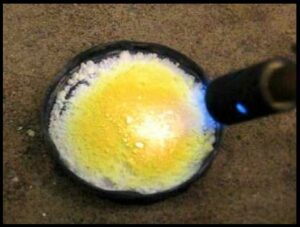
Changing Color by Heating
(credit: drmarkforeman)
Illuminating Bulb by Heating its Filament
When the electric current passed through the bulb’s filament, it heated the filament, accelerating its internal particles. The particles start changing position in separate orbits within the filament due to the kinetic energy from the heated filament. While performing the transition from orbits, the phonon particles ejected from the heated filament, called light.

Heating Bulb Filament
(credit: shutterstock)
Shaping the Glass by Heating
Earlier, we have explained that how temperature changes the density of the substance. Using the same principle, we can change other physical properties of the glass, like its shape, by applying heat. Since the physical change is reversible, we can again reshape the glass by changing its density using heat.
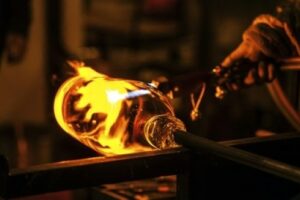
Shaping Glass by Heating
(credit: shutterstock)
Glowing of Metal by Heating
When we heat any portion of the metal, it will first glow, and its color changes into red hot. On consecutive heating, the metal starts expanding into another shape due to the faster movement of its molecules. If we still heat the metal continuously, it turns into its liquid state as molten metal. That show the application of heat cause change in physical properties like color, shape, and state.

Metal Glow by Heating
(source: shutterstock)
Solidification of Molten Metal by Cooling
When we withdraw the heat from the molten metal by cooling, it changes into its solid form with different shapes and colors due to the slower movement of its molecules. The process of decreasing the body’s temperature below its freezing point so that it converts into a solid state is called “Solidification”, which is similar to the water turning into ice in the freezer.
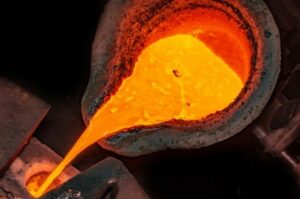
Molten Metal Solidified by Cooling
(credit: shutterstock)
The solidification process is used to shape the metal.
Soften the Food by Heating
When we heat the food like butter or cheese cube in a pan, it starts melting, and then on further heating, the vapors come out from it, showing its vaporization. If we place the cover on the pan and continue the heating, the vapors start to condense on the cover to form water droplets. The whole process shows how changes in heat result in a different phase transition of the substance.
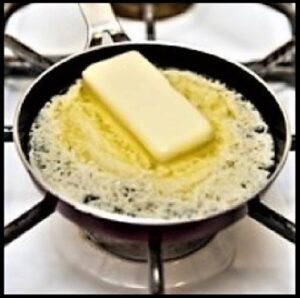
Soften the Cheese Cube by Heating
(source: shutterstock)
Melting Ice Cream by Hot Air
The sun is a natural source of heat energy – that can cause various phase transitions of any object without manually adding heat. Due to its heat rays, vacuum air temperature gets increases. Therefore, hot air in a vacuum melted the icy product like ice cream or crayons into a liquid state.
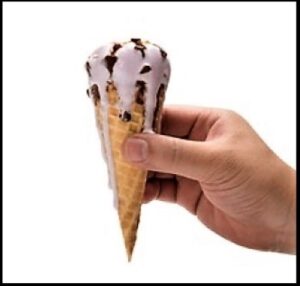
Ice cream Melting by Hot Air
(credit: shutterstock)
Evaporating Puddles by Sun
The sun supplies us with what most everything on earth demands to go – heat or energy. The sun heat first causes puddles or rainwater to evaporate into vapor gas which rises to the sky to produce clouds due to the sky’s low temperature. That’s how the sun plays the primary role in initiating the water cycle on the earth by applying its natural heat.

Puddles Evaporating by Sun
(credit: shutterstock)
During different phase transitions in the water cycle process, the water H20 changes only physically due to heat but not chemically.
Smoke of Mosquito Coil By Burning
Burning the mosquito coils produces smoke which efficiently controls mosquitoes in the room. The smoke results from the combusted material of the coil mixed with the air. Therefore, it is a hot vapor or by-product of heat that comprises gases, liquid particles, and carbonaceous matter from the air.

Smoke of Coil by Burning
(credit: shutterstock)
Also Read:
- Internal forces examples
- Rectilinear motion examples
- Pendulum examples
- Examples of spring force
- Coordinate covalent bond examples
- Non contact force examples
- Interference of sound examples
- Eukaryotic cells examples
- Osmosis examples
- Actuators examples

Hello, I’m Manish Naik completed my MSc Physics with Solid-State Electronics as a specialization. I have three years of experience in Article Writing on Physics subject. Writing, which aimed to provide accurate information to all readers, from beginners and experts.
In my leisure time, I love to spend my time in nature or visiting historical places.
Looking forward to connecting you through LinkedIn –